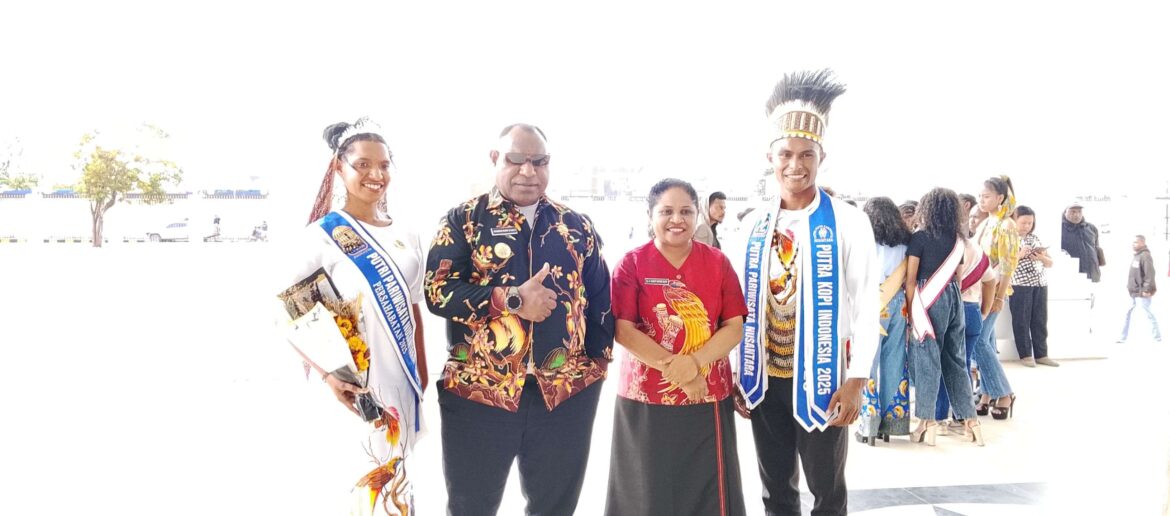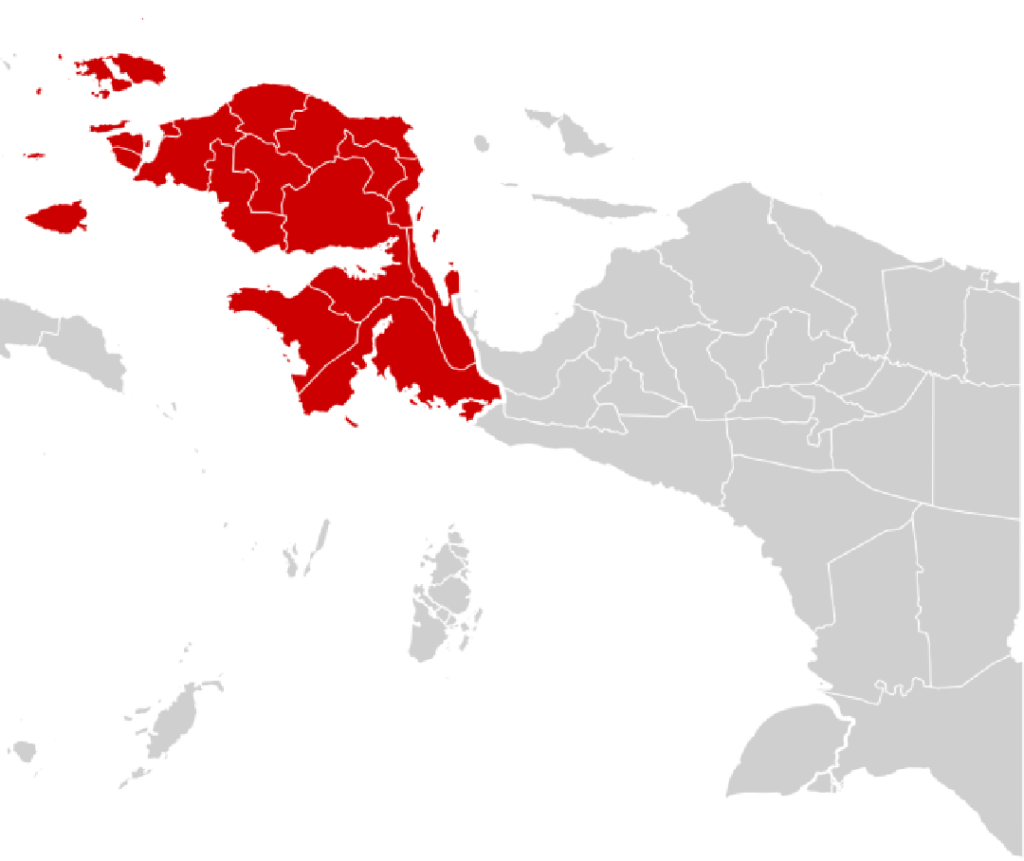The crowd that gathered at Wamena’s modest airport was unlike any other. Children carried woven noken bags filled with flowers, mothers donned traditional attire decorated with feathers and beads, and men performed the rhythmic dances of the highlands. It was not a political rally nor a religious gathering but a heartfelt homecoming: two young representatives of Jayawijaya Regency had just returned after making history at the Putra Putri Pariwisata Nusantara 2025 pageant held in Indonesia’s new capital, Ibu Kota Nusantara (IKN).
Their triumph was more than a victory in a beauty and talent contest. For the people of Jayawijaya, tucked deep in Papua Pegunungan’s misty valleys, it was a declaration that their stories, culture, and traditions deserved a place on Indonesia’s grandest stage. Their success reminded the nation that Papua’s contributions extend far beyond its natural resources—it is also a cradle of heritage, resilience, and artistry.
A Stage That Belongs to the Nation
The Putra Putri Pariwisata Nusantara pageant, organized annually under the El-Jhon Pageants banner, is not just a showcase of beauty or charisma. It is designed as a platform to crown Indonesia’s tourism and cultural ambassadors—young people capable of promoting the nation’s identity both at home and abroad.
In 2025, the stakes were higher. The grand final was held in IKN, East Kalimantan, symbolically linking Indonesia’s future capital to the cultural wealth of its diverse regions. With the theme “Empowering Indonesian Culture,” contestants were challenged not only to impress judges but also to demonstrate how their unique traditions could fit into the mosaic of a unified Indonesia.
Jayawijaya’s delegates—one young man and one young woman—stepped onto that stage carrying the soul of their homeland. Luis Mandala, representing Papua Pegunungan, earned the prestigious title of Runner-Up 2 Putra Pariwisata Nusantara 2025. Though not the overall crown, the recognition was groundbreaking: the first time Jayawijaya’s youth had secured such a prominent place in the national tourism spotlight.
A Journey Rooted in Tradition
Luis and his fellow representative were not ordinary contestants. Their preparation began months earlier in Jayawijaya, where local elders, cultural leaders, and government officials worked together to equip them. Costumes were carefully crafted, blending highland motifs with modern touches. Traditional dances were rehearsed until perfection. Elders shared stories of origin and legends of the Baliem Valley so the young ambassadors could carry those narratives with authenticity to the capital.
In interviews with local press, community leaders emphasized that their mission went beyond winning. It was about representation—to ensure that Indonesia’s tourism ambassadors included voices from the remote highlands, where access to education and exposure is often limited. In that sense, simply reaching the national stage was already a victory for Jayawijaya.
IKN: Where the Nation Watched
On the night of the grand final, the spotlight was bright and the hall filled with dignitaries, cultural figures, and cheering delegations from across the archipelago. The event crowned winners in various categories—Putra Putri Keraton, Museum, and Culinary Nusantara—each highlighting aspects of Indonesia’s vast heritage.
For the Jayawijaya team, their moment came when Luis was announced as Runner-Up 2. The crowd erupted, and Papua’s delegation waved flags and banners proudly. It was not just a personal victory; it was a symbolic recognition that Papua Pegunungan had arrived as an equal partner in Indonesia’s cultural showcase.
Deputy for Development Coordination at OIKN, Thomas Umbu Pati Tena Bolodadi, later remarked that the presence of contestants from remote provinces demonstrated the inclusivity of IKN’s cultural vision: “IKN is not just a new capital for administration. It must also become a meeting point for all of Indonesia’s traditions, languages, and creativity.” His words resonated strongly with the Jayawijaya community.
The Homecoming: Pride Written on Every Face
When the ambassadors returned to Jayawijaya, the scenes were unforgettable. Thousands of residents lined the roads. The regent, community leaders, and schoolchildren joined the procession. There was traditional dancing, music from local instruments, and speeches that praised the courage of the young representatives.
For local youth, especially young girls and boys who often see limited opportunities, the ambassadors became instant role models. Their success proved that a child from Wamena or the Baliem Valley could stand on the same stage as someone from Jakarta, Surabaya, or Denpasar—and shine just as brightly.
Local newspapers described the event as “a unifying moment of pride.” Social media was flooded with messages of congratulations, many emphasizing that Papua’s image is too often dominated by conflict or hardship and that these ambassadors had shown a different narrative: one of creativity, achievement, and dignity.
Cultural Ambassadors Beyond the Stage
The duties of Putra Putri Pariwisata Nusantara do not end when the crown is placed. Ambassadors are expected to advocate for tourism, culture, and sustainability throughout their tenure. For Jayawijaya’s representatives, this role carries special weight.
The Baliem Valley, with its world-famous cultural festival, ancient agricultural terraces, and breathtaking landscapes, has long been an underutilized tourism jewel. With national recognition now secured, local leaders see an opportunity to tie Jayawijaya’s story more firmly into Indonesia’s tourism narrative.
As one official noted, “This is not just about parades or titles. It is about telling the world that Jayawijaya is open, safe, and ready to welcome visitors who want to learn about our culture.” The hope is that the ambassadors can help attract both domestic and international tourists, boosting local economies while preserving traditions.
National Significance: A Story of Unity
The resonance of Jayawijaya’s success goes beyond regional pride. In a nation as diverse as Indonesia—home to more than 1,300 ethnic groups—representation matters. When youth from Papua Pegunungan take the stage at a national event, it strengthens the fabric of unity envisioned in Bhinneka Tunggal Ika.
Observers note that cultural events like these help counter stereotypes and build mutual understanding. In place of headlines about unrest, the nation saw Papuan youth celebrated as bearers of beauty, intelligence, and tradition. That shift in narrative may seem subtle, but it has profound implications for how Indonesians perceive each other.
Inspiring the Next Generation
For the youth of Jayawijaya, the message is clear: dreams are not limited by geography. Education, talent, and cultural pride can carry them from the misty mountains to the national stage. Schools are already planning to integrate more cultural activities, from traditional dance clubs to storytelling competitions, to prepare the next wave of ambassadors.
Parents, too, are encouraged. Many spoke about how the ambassadors’ achievements inspired them to continue supporting their children’s education despite challenges. In regions where dropout rates remain high, role models like these can make a tangible difference.
A Call for Sustained Support
The question now is whether this momentum can be sustained. Cultural achievements require infrastructure: training centers, funding for costumes and travel, and programs that bridge traditional knowledge with modern presentation. Local governments, buoyed by the success, have pledged more support for youth cultural initiatives.
Nationally, the Ministry of Tourism and Creative Economy has indicated interest in leveraging the story of Jayawijaya’s ambassadors as part of Indonesia’s broader tourism campaign. By highlighting diverse regions like Papua Pegunungan, Indonesia strengthens its positioning as a global destination defined by culture as much as natural beauty.
Conclusion
The journey of Jayawijaya’s ambassadors at the Putra Putri Pariwisata Nusantara 2025 pageant is more than a story of competition. It is a narrative of identity, resilience, and the unbreakable bond between culture and community. From the thunderous applause in IKN’s grand hall to the tears of pride in Wamena, their achievement underscores a timeless truth: Indonesia’s unity is strongest when all voices, from the largest cities to the remotest valleys, are heard and celebrated.
For Jayawijaya, the moment will echo for years to come. The highlands have produced not just contestants but cultural beacons—youth who carry the stories of their ancestors and the aspirations of their peers. Their footsteps in IKN remind the nation that the future of Indonesian tourism and culture is brightest when it shines from every corner of the archipelago.


